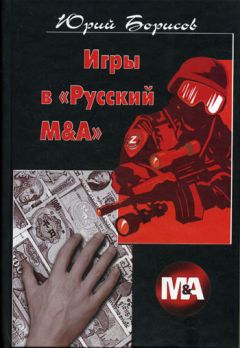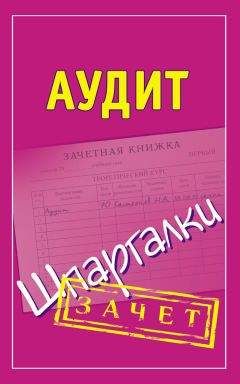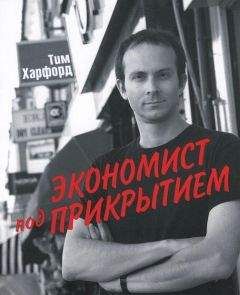Николай Камзин - The implementation of the economic cycle: freedom, trust, duty
Все авторские права соблюдены. Напишите нам, если Вы не согласны.
Описание книги "The implementation of the economic cycle: freedom, trust, duty"
Описание и краткое содержание "The implementation of the economic cycle: freedom, trust, duty" читать бесплатно онлайн.
Existentialism proclaims the idea of a man present, performing a search for meaning, making choices, self-determining in its relation to reality, possessing an active subjective entity. In the process of economic activity a person is faced with the action of their own will influence other areas of the will of the active agents. He needs arise that require his satisfaction, he is involved in the economic cycle, some of which sectors are investigated in this study, namely: entrepreneurship, as a consequence of the implementation of a new combination of natural factors, business risk as a source of entrepreneurial profit and a catalyst for economic activity, business as routine economic activities aimed at developing the existing building, international business, as economic activity is possible at a potential that is created by public constraints, international payments, as the movement of financial resources for a business, writ proceedings, as inevitable, the procedure of execution of mutual obligations with the participation of the public entity, collateral relations, as security relationships that create a safety buffer for the counterparty.
For non-commercial transactions be used travel (tourism) receipts issued by a major bank in different currencies. Cheque – monetary instrument prescribed form containing an order to pay the bank designated by him the currency to its owner. Form and check details are regulated by national and international laws (check the 1931 Convention, etc.).
If payment is made by check, the debtor (buyer) either alone puts a check (check the client), or shall refer it to the bank statement (check the bank).
Road (coach) check – a payment document, the monetary obligation (order) to pay the amount indicated on it the owner of the check. It is issued by major banks in national and foreign currency.
Eurocheque – check in the Euro-currency issued by a bank customer without prior payment of cash and in larger amounts through a bank loan of up to 1 month. He is paid in any currency of the country – member agreement. Eurocheque in force since 1968.
In the international accounts are actively used bank cards (Visa, MasterCard, CirusMaestro, Union Card, DinerS Club, and American Express).
International operations are carried out with the help of computers, electronic signals in the form of entries in the memory banks of computers, transmitted via remote communication. Information is passed on interbank settlements through SWIFT. Joint Stock Company – Worldwide Interbank Financial Telecommunication Network (since 1977) serves about four thousand banks and financial institutions nearly 100 countries.
Currency clearing – settlements in the form of mandatory set-off of international requirements and obligations on the basis of intergovernmental agreements. Unlike the domestic interbank clearing of mutual credits at the exchange clearing not made voluntarily, and without fail in the presence of an intergovernmental agreement. For the first time foreign exchange clearing was introduced in 1931 amid the global economic crisis. They are widely spread before and especially after World War II (with 74 – in 1935 to 400 bilateral clearing – in 1950). In 1950 – 1958's. multilateral clearing – EUROPEAN PAYMENTS UNION (EPU) – covered 17 countries in Western Europe.
Due to clearing international payments exporters and importers made in national currency with the clearing banks, which produce a final set-off of mutual claims and obligations. Exporters are not foreign and local currency. Importers bring in national currency clearing bank.
Bank for International Settlements (Basel) is the agent bank clearing. William Shakespeare wrote: «If there be nothing new, but that which is, hath been before»[44], was a question about the effectiveness of the regulatory activities of international monetary institutions, which in conditions of crisis in the global system has fallen significantly, prompting several governments located in the band to do disruption reconstruction of the whole system of currency regulation.
Historically, the following features of the main forms of international payments:
– Importers and exporters, as well as their banks to enter into definite relations associated with the payment of title and documents.
– International operations are regulated by legislation and banking regulations.
– International operations – the object of unification and universalization of banking operations. In 1930 and 1931 accepted international promissory notes and checks Convention (Geneva), aimed at harmonizing the bill and voucher laws. The Commission on International Trade Law United Nations (UNCITRAL) continues to unify the Bills of Exchange Act. International Chamber of Commerce, established in Paris in the early XX century, Develops Uniform Customs and Practice for Documentary Credits, the collection and contract guarantees. For example, the first rules were developed for collection in 1936, and then revised in 1967 and 1968. Adheres to these rules, the majority of banks in the world.
– International operations are usually documentary in nature, which is exercised against the financial and commercial documents.
The financial instruments include promissory notes (promissory and transfer), checks, payment receipts.
Commercial documents include invoices, shipping documents evidencing shipment or dispatch (bills of lading, receipts, etc.), insurance documents insurance companies, other documents (certificates, bills, etc.).
The bank verifies the content and completeness of these documents.
Chapter 2
Organization of payments and the order of execution of mutual financial obligations in international economic cooperation
1. International operations as part of the international monetary and financial relations
1.1. The evolution of the global monetary system as a factor development of the international monetary and financial relations
International monetary system-enshrined in international agreements, a form of organization of monetary and financial relations, which operate independently or serving the international movement of goods and factors of production[45].
Monetary and financial system is a necessary step to promote international trade in goods, financial instruments and the movement of factors of production. It consists of two elements. Currency components of the system is the national currency, the terms of their mutual convertibility and circulation, exchange rate parity, exchange rates and national and international mechanisms of its regulation.
Financial elements of the system are the international financial markets and trading mechanisms to specific financial instruments – currency, securities, and loans.
Independent element of the international financial system is the international settlements, serving as the movement of goods and factors of production and financial instruments.
International financing mechanisms are key elements of macroeconomic adjustment, which is carried out in the country's open economy.
Currency is divided according to its membership to:
– the national currency – legal tender in the issuing of countries;
– foreign currency – legal tender in other countries, used in that country.
Classifications can be varied for different characters, in order to achieve the objectives of the study relevant is the following: reserve currency – the currency in which the state held its liquid international reserves used to cover the negative balance of payments.
Generally accepted in the world currency, which is accumulated by central banks in foreign exchange reserves. It serves as an investment asset, is a method of determining the exchange parity used as a tool of foreign exchange intervention, if necessary, as well as for the central bank for international settlements.
The most important characteristic is the degree of currency convertibility them – the ability of residents and non-free and unrestricted exchange and use in transactions with real financial assets.
From the standpoint of balance of payments is convertible for current transactions, capital transactions and complete, and in terms of residents – domestic and foreign.
The classification of exchange rate systems based on what is recognized as a reserve asset, that is, with the help of an asset can be settled by the imbalances in international payments. By this criterion standard monetary systems are divided into gold, gold exchange, devising. During different periods of history such assets were gold, the dollar convertible into gold at a fixed rate, any currency accepted for international payments, but above all, freely usable currencies.
The gold standard was based on the formalization of the countries of the gold content per unit of domestic currency liabilities of central banks buy and sell domestic currency in exchange for gold. Gold exchange standard based on the officially established fixed parities of currencies against the U.S. dollar, which in turn was convertible into gold at a fixed rate. The main features of the standard devising lies in the fact that countries can use any system of exchange rates of their choice – a fixed or floating, established unilaterally or through multilateral agreements. The IMF has the authority to oversee the development of exchange rates and arrangements for their establishment. Abolished the official price of gold, and eliminated its role as the official means of payment between the IMF and its members. As an additional reserve asset, special drawing rights (SDRs).
With the development of foreign economic relations and formed the world monetary system as a form of currency relations governed by the national currency laws and interstate relations. The main element of the monetary system of each country is its national currency[46]. Features of the world monetary system and principles of its construction are closely related to the structure of world economy. It is obvious that a change in its structure has evolved and the world monetary system and, consequently, are modified and improved its basic elements:
– the functional form of world money;
– terms of convertibility;
– modes of exchange rate parities and exchange rates;
– the level of foreign exchange regulation and the extent of foreign exchange restrictions;
– unification of the forms of international payments.
The development of the world monetary system is a spiral with a gap of several decades. In the domestic economy, the monetary systems have evolved from the gold coin standard to a gold bullion and gold exchange, and from him – a paper-credit treatment. Evolving global monetary system has moved to the next stage, called the Jamaican system. It was arranged by agreement of member countries by the International Monetary Fund (IMF) in 1976 in Kingston, Jamaica[47], in which formed the basic principles of a new monetary system, embodied in April 1978 in the second amendment to the Articles of Agreement of the IMF. These principles, which are today, are as follows:
– the abolition of the official price of gold was legalized demonetization of gold, but, nevertheless, thanks to the real values of gold, followed by continued extraordinary role of world money and reserve assets;
– gold exchange standard was replaced by a standard SDR, which formally declared the foundation of currency parities, but in practice did not become a standard of value, the main payment and reserve funds;
– instead of a fixed exchange rate of the country officially since 1973, switched to a regime of floating exchange rates, but were able to choose a fixed or floating exchange rate;
– the IMF has the authority to supervise the development of hard currency and the establishment of agreements.
Problems of Jamaican currency system very quickly appeared in the imperfection of floating exchange rates. Moreover, the problems encountered have exacerbated the financial and currency crises. The need to coordinate national action for overcoming the crisis led global economic community to re-evaluate the role of international financial regulators to harmonize the policies of different countries in the field of monetary relations. William Shakespeare wrote: «If there be nothing new, but that which is, hath been before»[48], was a question about the effectiveness of the regulatory activities of international monetary institutions, which in conditions of crisis in the global system has considerably decreased, forcing the governments of several countries in the band to do disruption reconstruction of the whole system of currency regulation.
The IMF has not coped with the task of predicting the crisis of early shocks. Although this program was developed jointly with the World Bank, IMF, passively watching the change in the macroeconomic cycle – the transition from boom to slower growth of bank lending in the financial market and detachment from the real economy, especially in developed countries, particularly the U.S., which led to the global financial and economic crisis[49].
In economic theory, international monetary relations issues remain unchanged. Over the years, changing only the answers[50]. Like the philosophical notion of substance, dualistic in nature. The inner essence of a stable core and the outer reflection of it in our time, so all knowing «dig» to the bottom of the rod, and starts searching with the external reflection, effortlessly accessible to every listener.
To effectively solve problems of macroeconomic management, on the one hand, the actions of the Central Bank of the Russian Federation should be characterized by independence and consistency. On the other hand, measures in the monetary are a must be accompanied by adequate fiscal policies[51].
As rightly pointed out Frederic Bastiat «you cannot give money to some members of the community but by taking it from others»[52] cash equivalent because this is the existing opportunities, money is their «mirror image», and, therefore, imperative redistribution of opportunity or the cost of moving simply changing the terms without affecting the sum.
Tabl. 1
The main stages of the global monetary system
Compiled from: Батманова Е.С. Томилов П.С. Мировая экономика и международные экономические отношения. – Екатеринбург: Издательство ГОУ-ВПО УГТУ-УПИ. 2005. – С. 85.
1.2. The essence and form of international payments. Government regulation of international payments
Current international monetary and financial relations include the operations of different nature – from payments for goods and services before payment for the provision and maintenance of international loans, transfers of pensions and salaries to sales and purchases of foreign securities and property[53].
Psychological basis of any human activity is the mechanics of the human psyche, which pushes him to recognize the needs, demands satisfaction, and the person on the basis of their theoretical knowledge and life experience of exploring ways to achieve the goal. This happens through his own motivation, or on the basis of external stimulation, which occurs as a result of burdening the public property needs.
Given that the efficiency of the closed system inferior to the open, meeting the needs of the entire complex is more expedient to implement jointly, that is to give your needs the element of publicity. At least for a few subjects and on the basis of separate contributions to achieve the result by mutually beneficial structural interdependence[54]. The mechanics of achieving this result is based on the exchange in particular and multifaceted cooperation through the division of labor in general.
The ability of individual actors – the most stable element of their economic activity, in view of the commodity offered to exchange them, showing them a professional, industry specialization. Thus, already being a prerequisite to commodity exchange or barter. However, a more efficient exchange on the basis of a universal equivalent of a multiple product of each subject in the form of «money that goes with the merchant»[55], whom in modern economic relations serves the monetary unit, money. However, this issue remains unresolved even today in the field of international cooperation and solved in a specific situation or more constant in some sectors of economic cooperation.
The world and its phenomena are dynamic, if at first glance, it seems otherwise, it is necessary either to change the lens, or just look at a different angle. To maintain the momentum of the dynamics in economic relations, but mostly for her influence on a public entity governed by the calculated ratio of participants. Every sovereign in its territory shall have the power to establish its own unit of account, the currency in which there shall be canceled and liabilities. Part 1[56], Art. 75 of the Constitution of the Russian Federation shall establish circulation in the Russian monetary unit of the Russian Federation granted the exclusive right to issue ruble Russian central bank to ban the introduction of other money. External essence of money is being used for correspondence of mutual obligations, to implement the «exchange opportunities»[57], as wrote Carl Menger. The inner essence of the concentration of labor, the expression of what they are in the form of purchasing power, the «price of money»[58] as refined J.A. Schumpeter.
Подписывайтесь на наши страницы в социальных сетях.
Будьте в курсе последних книжных новинок, комментируйте, обсуждайте. Мы ждём Вас!
Похожие книги на "The implementation of the economic cycle: freedom, trust, duty"
Книги похожие на "The implementation of the economic cycle: freedom, trust, duty" читать онлайн или скачать бесплатно полные версии.
Мы рекомендуем Вам зарегистрироваться либо войти на сайт под своим именем.
Отзывы о "Николай Камзин - The implementation of the economic cycle: freedom, trust, duty"
Отзывы читателей о книге "The implementation of the economic cycle: freedom, trust, duty", комментарии и мнения людей о произведении.











